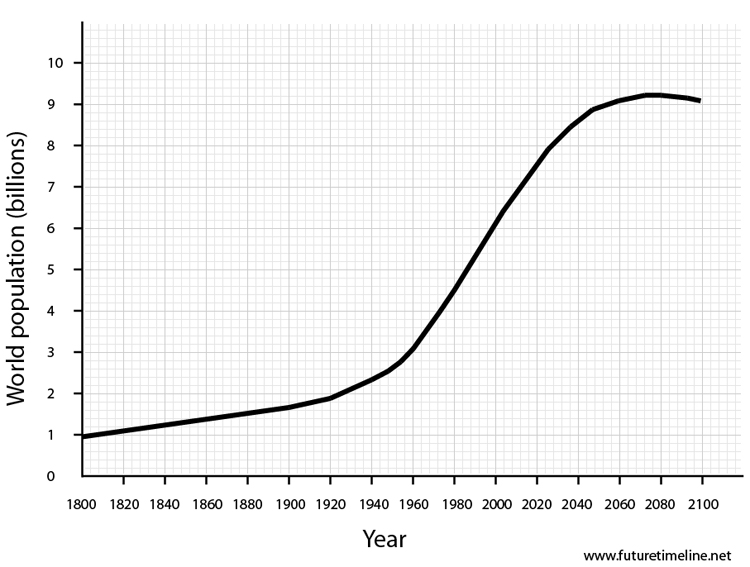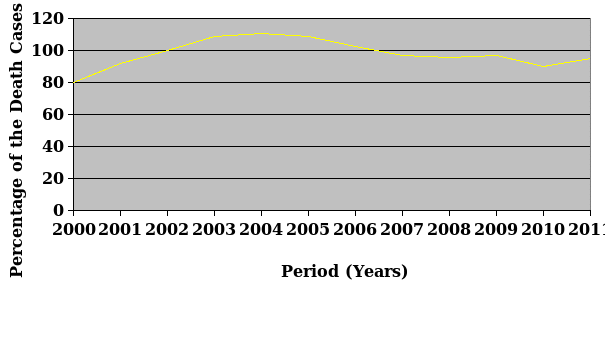Today the problem of overpopulation is widely discussed by the researchers, economists, sociologists, scholars, and politicians. The fact which causes the public discussions is the problem of carrying capacity because overpopulation can be defined as the situation when the growth of population is higher than the level of possible carrying capacity. The question of overpopulation should be discussed in several perspectives with paying attention to the challenges and the ways of stabilizing the situation.
Epidemiological and Demographic Aspects
According to the current data of the Worldometers, today the population of our planet is more than 7 billion people (“World Population Clock”). The statistical data proves the fact the number of the population is constantly growing. Many researchers support the idea that the world population will be doubled in fifty years because of 1.5 % growth. However, it is necessary to examine the situation separately for every region and country (Bodden). The situation in the countries of the Eastern region, Africa, and Latin America develops according to the tendencies in the increase of the population. Nevertheless, the situation in the Western world is quite opposite (Bodden). From the point of demographic aspect we cannot speak about the situation of overpopulation today because according to the definite investigations, the carrying capacity as the possibility of the environment of our planet to sustain the definite amount of inhabitants can reach the number of 17 billion people (“World Overpopulation Awareness”).

The increasing of population can result to the changes of the demographic situation in the urban territories because there is the obvious interdependence between the growth of the population and the increased urbanization processes (“World Overpopulation Awareness”). The growth of cities also reveals the negative aspect of the overpopulation connected with the expansion of slums. Furthermore, the expansion of slums and unsanitary overpopulated territories is the first step to the extension of epidemic diseases because of the lack of the appropriate health care (Bodden). According to the epidemiological data of statistics, the rate of deaths caused by epidemics as a result of the overpopulation has changed from 77% in 1959-1964 to 95 % in 2011 (the data is related to the situation in the Asian region) (“World Overpopulation Awareness”). The threat of overpopulation is also the reasons for the development of migration processes as the way to escape from dangerous conditions for living (United Nations Environment Programme).

The Level of Mortality Caused by Epidemics in the Asian Region for the Period of 2000-2011
Environmental Aspect
There is a range of environmental problems which can become the results of overpopulation. The most controversial of them is the issue of pollution. It includes air pollution with carbon dioxide which is the effect of active usage of transport by people and of the industries’ development and soil and water pollution which are the result of constant increasing the number of garbage which is not overproduced or utilized (United Nations Environment Programme).
Thus, overpopulation can be considered as the cause of the extreme pollution of the planet which influences the global warming effects which result to the climate change. Therefore, overpopulation can result to global climate changes which will be irreversible Moreover, overpopulation can be the cause of the lack of fresh water and food supply in several years (Bodden).
Socio-economic Aspect
Many researchers discuss the fact of overpopulation as the main aspect of the progress of the high level of poverty in the overpopulated territories, and, as a result, the high level of unemployment, the decrease of living standards, underdevelopment, and lower education rates (Bodden). The problem of poverty is closely connected with the issues of starvation and the increase of mortality in the regions where the imbalance of the necessary resources (food and water shortage) and the number of population can be observed (“World Overpopulation Awareness”). Moreover, the situation of the lack of correlation between the population’s needs and the access to the necessary resources can develop negatively (United Nations Environment Programme).
Political Perspective
The situation of overpopulation is the threat for the changes of the interaction norms between people. That is why the politicians focus on the aspect that definite laws should be adopted in order to control the public issues and restrict the personal freedom in order to preserve the balance between the social groups (Bodden).
Nevertheless, the situation can be also controlled with the help of implementing the birth control measures (for instance, the policy provided in China), urban planning, and the effective distribution of the necessary resources (fertility control on the governmental level).
It is necessary to support international and national organizations which activities are directed toward educating people on the benefits of family planning. Furthermore, these organizations should also control the growth of population with the help of programs in the health care system. The reasons for such reforms are the needs to organize the effective life in the world which is under the threat of overpopulation and to do all possible to overcome this threat (“World Overpopulation Awareness”).
Challenges and the Ways of Stabilization
Having analyzed the main aspects of the overpopulation issue, it is possible to determine such challenges which can be caused by the possible overpopulation of the planet as follows:
- the lack of the necessary natural resources including the decreased amount of clean water, clean air and food which can influence the starvation and malnutrition in the overpopulated territories;
- the climate changes which are the result of the environmental problems associated with overpopulation;
- the increase of migrations;
- the progress of urbanization and poverty (“World Overpopulation Awareness”).
The possible stabilization of the situation can be achieved while implementing the principles of birth control, family planning, legal regulations of the overpopulation processes in cities on the governmental level and consistent for all the regions of the planet.
Works Cited
Bodden, Valerie. The Threat of Overpopulation (Earth Issues). USA: Creative Educ, 2010. Print.
United Nations Environment Programme. Global Environmental Outlook – 4. n.d. Web.
World Overpopulation Awareness. n.d. Web.
World Population Clock. Worldometers. n.d. Web. 2012.